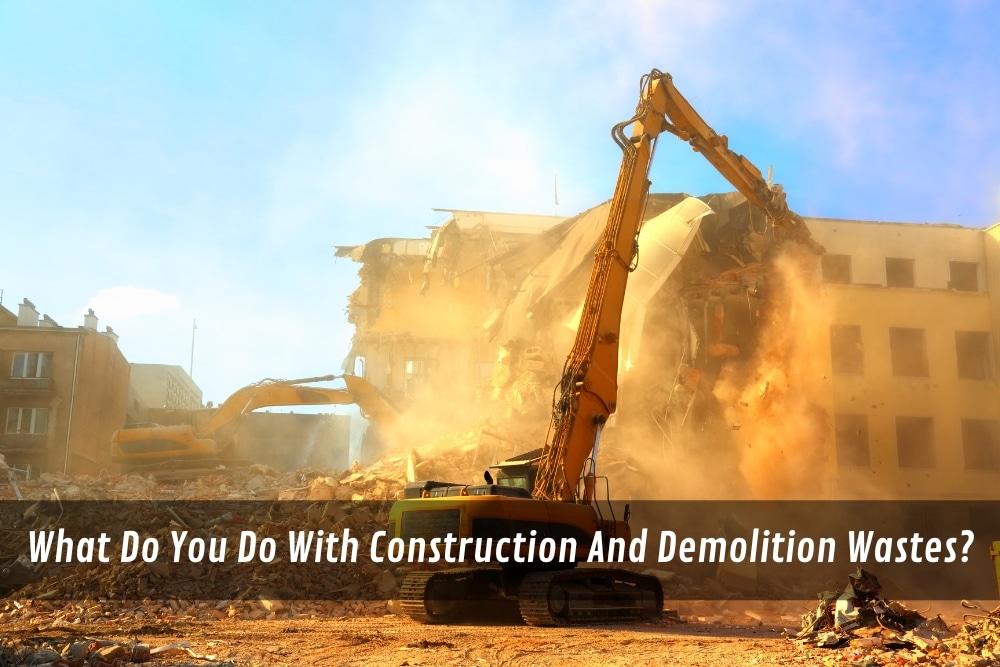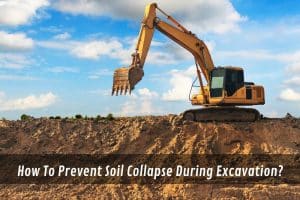Demolition waste disposal is crucial for environmental protection. Improper handling of waste materials from construction and demolition activities can harm our surroundings. Each year, millions of tonnes of waste are produced, making it essential to manage and dispose of these materials safely and sustainably. This includes waste segregation and recycling. In this blog, we will explore how to manage construction and demolition wastes, and how proper disposal practices contribute to a cleaner and healthier environment.
What is the importance of proper disposal of construction and demolition waste?
The proper disposal of construction and demolition (C&D) waste is critical for several reasons.
- Firstly, if not managed properly, C&D waste can harm the environment and affect human and wildlife health through air, water, and soil pollution.
- Secondly, C&D waste takes up a significant amount of space in already overcrowded landfills, requiring the creation of new landfills that harm the environment and increase waste disposal costs.
- Thirdly, proper disposal of C&D waste conserves valuable resources by recycling and reusing materials.
- Fourthly, non-compliance with strict C&D waste management regulations can result in penalties and fines.
Overall, effective waste management practices are essential to protect the environment, conserve resources, and comply with regulations for a sustainable future.
Types of Construction and Demolition Waste
Construction and demolition waste can be divided into a few different categories, depending on the source of the waste. In general, construction and demolition waste, commonly referred to as C&D waste, encompasses a variety of materials including but not limited to concrete, bricks, wood, metal, plastics, glass, cardboard, and asphalt.
Concrete and bricks are some of the most common types of construction and demolition waste. These materials can be recycled or reused to create new products – helping us conserve resources and reduce environmental impact. Other types of C&D waste include wood, metal, plastics and more.
These materials should be managed responsibly to ensure that they do not pose any harm to our environment or public health. By creating an effective management plan for these materials and choosing certified facilities for disposal – we can help protect our environment and preserve valuable resources.
How to properly handle and dispose of waste?
Proper handling and disposal of waste, especially demolition waste, is crucial for environmental protection, human health, and sustainable use of resources. Demolition activities often generate a large amount of waste materials, including bricks, concrete, and other construction and demolition (C&D) waste.
The construction industry is a major contributor to waste generation, with millions of tonnes of solid waste being produced annually. Managing waste effectively requires a waste management plan that considers the different types of waste, including hazardous waste, and identifies appropriate waste facilities for disposal.
Another step in proper waste disposal is choosing the right facilities for disposal. All facilities used for construction and demolition waste should be certified by the relevant authority to make sure that they follow safety regulations and responsible disposal practices.
Finally, it’s important to think about how much waste is being generated and take steps to reduce this amount. By recycling or reusing building materials where possible, we can save resources and cut down on the amount of C &D waste that needs to be disposed of.
What are the advantages of recycling and reusing?
The practice of recycling and reusing construction and demolition waste yields multiple advantages. Not only does it help conserve resources, but it also reduces the number of materials that need to be disposed of in landfills or incinerators. This decreases air and water pollution, as well as greenhouse gas emissions, helping to ensure a healthier environment for all.
It can also have economic benefits, as recycled materials can often be sold or reused in new projects – creating jobs and stimulating the economy. Additionally, recycling C&D waste means that fewer valuable resources are being wasted – allowing us to preserve them for future generations. Also, recycling building materials from a house demolition helps preserve valuable resources and can reduce the costs associated with new construction projects.
Finally, recycling and reusing C&D waste helps reduce the environmental impact of construction activities by reducing our reliance on new materials. This helps us build a more sustainable future for our planet.
What are the current government regulations regarding construction and demolition waste management?
In Australia, the management of construction and demolition (C&D) waste is governed by both federal and state regulations. The key regulations that relate to C&D waste management are:
- National Environment Protection (Movement of Controlled Waste Between States and Territories) Measure 2018: This measure regulates the movement of controlled waste, including C&D waste, between states and territories in Australia. It sets out requirements for waste classification, tracking, and reporting.
- Environment Protection and Biodiversity Conservation Regulations: This act is a federal law that regulates the impact of activities, including the management of C&D waste, on the environment and biodiversity.
- State and Territory Environmental Protection Acts: Each state and territory in Australia has its own environmental protection legislation that regulates the management of C&D waste. These acts set out requirements for waste tracking, disposal, and recycling.
- Australian Standard AS 4123:2000: This standard provides guidelines for the safe and environmentally responsible management of C&D waste.
- Waste Management Policy (Siting, Design and Management of Landfills) 2013: This policy sets out requirements for the design, construction, and operation of landfills, including those used for C&D waste disposal.
In addition to these regulations, some states and territories have their own specific regulations and guidelines for C&D waste management. For example, the New South Wales Environment Protection Authority has developed the NSW Waste Avoidance and Resource Recovery Strategy 2014-21, which sets out a plan to reduce waste generation and increase recycling rates.
Conclusion
In summary, proper disposal of construction and demolition waste is essential for environmental and human health protection. A comprehensive waste management plan is crucial to achieving environmental protection goals. This plan should include waste reduction, selecting appropriate facilities for disposal, adhering to government regulations, and responsible waste management practices. By implementing these measures, we can ensure sustainable management of C&D waste and contribute to a cleaner and healthier environment for future generations.
If you’re looking for a highly experienced team to help you with your residential and commercial demolition and site services, look no further than Watson Demolition & Site Services. We have the experience, expertise, and equipment to get the job done safely and responsibly – so contact us today for more information. Our team of experienced professionals are here to help you every step of the way.



